But first …
Whilst just putting the final polishing touches to this morning’s newsletter, the annual, usually too brief, appearance of a beautiful White-crowned Sparrow got Sunday off to a splendid start. He had polished his cycle-helmet for this star performance. Always looked for with anticipation.
… but not only that. Shortly afterwards the Sparrow was followed by the FOY appearance of this beautiful Rose-breasted Grosbeak. Goodness, what a day!
Now - down to business
This year, as an exercise, I have been keeping a list of all birds visiting our garden between 7am and 8m every day of the year. Between those times, because it’s when we are surfacing with the aid of large mug of tea and counting birds is the best way to start the day. The charts below are from eBird and give you an idea of what has been here from 1 January to 30 April. The full spring migration rush, currently stuttering into action, is going to engulf us shortly so this is a good time to take stock before we are overwhelmed. Already, though, you can see there are some more species added to the list in the last week or so. Remember that up to a few weeks ago the garden was constantly under deep snow and temperatures were mostly far, far below zero.
Now looking at that list of 39 species of birds to the end of April, I could think “only 39” and it’s true, those are not the only birds I have seen in these four months of pre-migration. BUT, they are all birds that voluntarily arrived in my garden while we were sitting in the warm, with a mug of tea, in just one hour each morning and we didn’t have to put on boots and gloves and thick jackets and stomp to in the snow. What’s more, 39 species is about 50% of the normal range for species in Montreal recorded during the Christmas Bird Count. So it’s not bad at all - and it’s certainly one in the eye for that unobservant chap I have mentioned before who “only sees blackbirds and sparrows”. Nothing particular to write home about, perhaps, but makes all this observing and noticing rather enjoyable … aided by the tea.
As of this morning, the garden year list is now at 41 species but the two that arrived this morning (vide supra) are “extras” to the charts above.
All of which is to say that you can do some pretty decent birding without ever leaving your own home. This garden is just a suburban one such as many possess … not that large, perhaps with more trees than typical. Stick up a couple of feeders and enjoy what arrives.
The most productive location to see the migrating birds that will be arriving shortly as they pass through is your garden. If you live near me you could/should go to the Arboretum, especially around Blossom Corner in the early morning, but your garden can be remarkably productive. We have a small pond that I dug, with a waterfall, at the top of which is a tiny header pool from which the water spills. There are rocks in there and nowhere is the water deeper than a few inches. The result being that tired and thirsty birds that have travelled a very long way will come down for a drink and to splash around and refresh themselves right where we can watch and photograph them. You don’t have to create the sort of set-up we have however. The birds are mostly looking for somewhere sheltered, and they are drawn by moving water as if to a magnet and that’s not hard to provide. Food too, of course.
What might you spot about now? Yellow-rumped Warblers are quite common and starting to show up now, as are Nashville and Tennessee Warblers. Maybe a Yellow Warbler or a Blackpoll Warbler. If the birding gods are on our side, look for Bay-breasted, Canada, or Black-throated Blue Warblers. For instance, during just one week of a previous May, we spotted over 30 bird species in our garden, mostly near the waterfall. Of those, 11 were warblers. It’s possible there were more, but we have to take breaks from birdwatching sometimes for things like cooking and dinner. Early in that week, White-throated Sparrows that had been hanging around for a while were joined by a couple or three White-crowned Sparrows – they’re the guys in “cycle helmets” with grey chests – and not long after, a female Baltimore Oriole was drawn to a halved orange we put out with her in mind. The warblers started arriving a couple of days later in some numbers, often around afternoon tea time so we could enjoy them comfortably. See the common theme there? Tea.
Learning to see and identify our birds is enjoyable and educational.
“I had forgotten you were a bird-watcher till you reminded me just now. You went in for it at Oxford, I remember. It isn’t a thing I would care to do myself. Not,” I hastened to add, “that I’ve anything against bird-watching. Must be most interesting, besides keeping you” – I was about to say “out of the public houses” but thought it better to change it to “out in the open air”.
“What’s the procedure?” I went on. “I suppose you lurk in a bush till a bird comes along, and then you out with the glasses and watch it.”
― P.G. Wodehouse, Aunts Aren't Gentlemen
The various different habitats of wherever you live provide a rich diversity of locations to see birds. Be it in our gardens, in a park or piece of woodland, along the shoreline or beside a river there is always something to see and enjoy, whether for the novice or the expert. The areas of mature forest, open green spaces, groups of garden shrubs and associated forest-edge habitat that most towns offer all attract a wide selection of birds.
Something that almost all people new to birding mention, and in fact the reason why some may later decide not pursue the pastime, is that they find trying to work out the identity of the birds they are seeing rather confusing - even if they have a good field guide on their bookshelves. Start by learning the features of a small group of birds that you actually stand a good chance of seeing and then set out to find them. Ask for help from a local birder to decide what to focus on. Cardinal, Chickadee, Goldfinch, some Sparrows species. That sort of thing. Once you have learned these birds you will start to find it easier to add more and more to your mental collection.
“With my new habit of carrying binoculars everywhere, I feel imbued with a readiness to see, an attitude that my life itself is a kind of field trip. The urban naturalist has the terrific luxury of stepping out her door and into "the field," without long rides or carpools, or putting money in for gas and Dairy Queen. When does the field trip begin? Whenever we start paying attention.”
― Lyanda Lynn Haupt
Start with Woodpeckers … a common group that are easy to see and not hard to identify
What would woodland be without its Woodpeckers? Downy, Hairy and Pileated are, of course, year-round residents here, and very easy to locate almost anywhere but in summer there are five or six species to seek plus a couple more rarities if you are favored by the birding gods. Offer a peanut feeder and they will visit your garden daily. Pileated are here in surprising numbers and can be found almost anywhere, they breed in town and in the Arboretum. They will visit your feeders if you offer peanuts and, in winter, suet blocks.
Yellow-bellied Sapsuckers and Northern Flickers are migratory and leave us in the winter but are fairly easy to find in spring and summer. The Black-backed Woodpecker is south of its usual range here and actually favours areas of recently burned forest - nevertheless, it is seen/heard some years, usually in the further corners of a forest away from the pressure of visitors and dogs.
The Red-bellied Woodpecker is a relatively new discovery for us, and a species that is traditionally seen well south of Montreal. First seen this far north in the Arboretum in mid-winter 2008/9. It is not a particularly shy bird and welcomes food provided at the feeders - peanuts and suet in particular. Since then, small numbers have been around in winter and they are occasionally seen/heard in summer too. There is proof of local nesting and a small, but growing, population has been spreading each summer into surrounding suburban areas in search of territory. Look out for these beautiful birds in the maple stands and mixed woodland. If you are favoured, we have occasionally been, they may visit your garden too in the colder months. Like several unusual bird species spreading northwards into this area they are relatively dependent on humans provided food to see them through the winter - so put out quality food to attract them.
A Pileated Woodpecker Vandal
https://www.nytimes.com/2025/04/23/us/woodpecker-breaking-car-mirrors.html




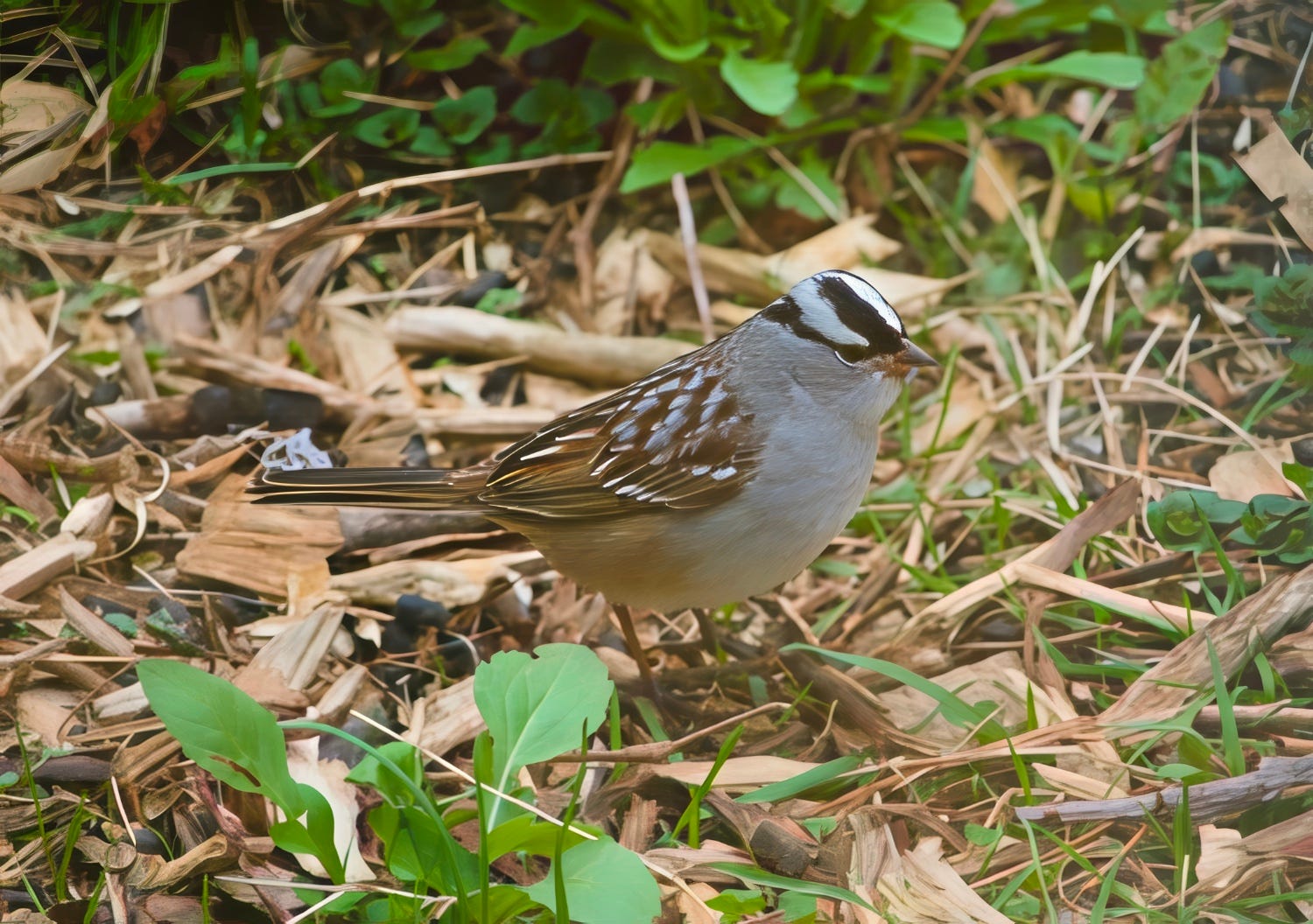
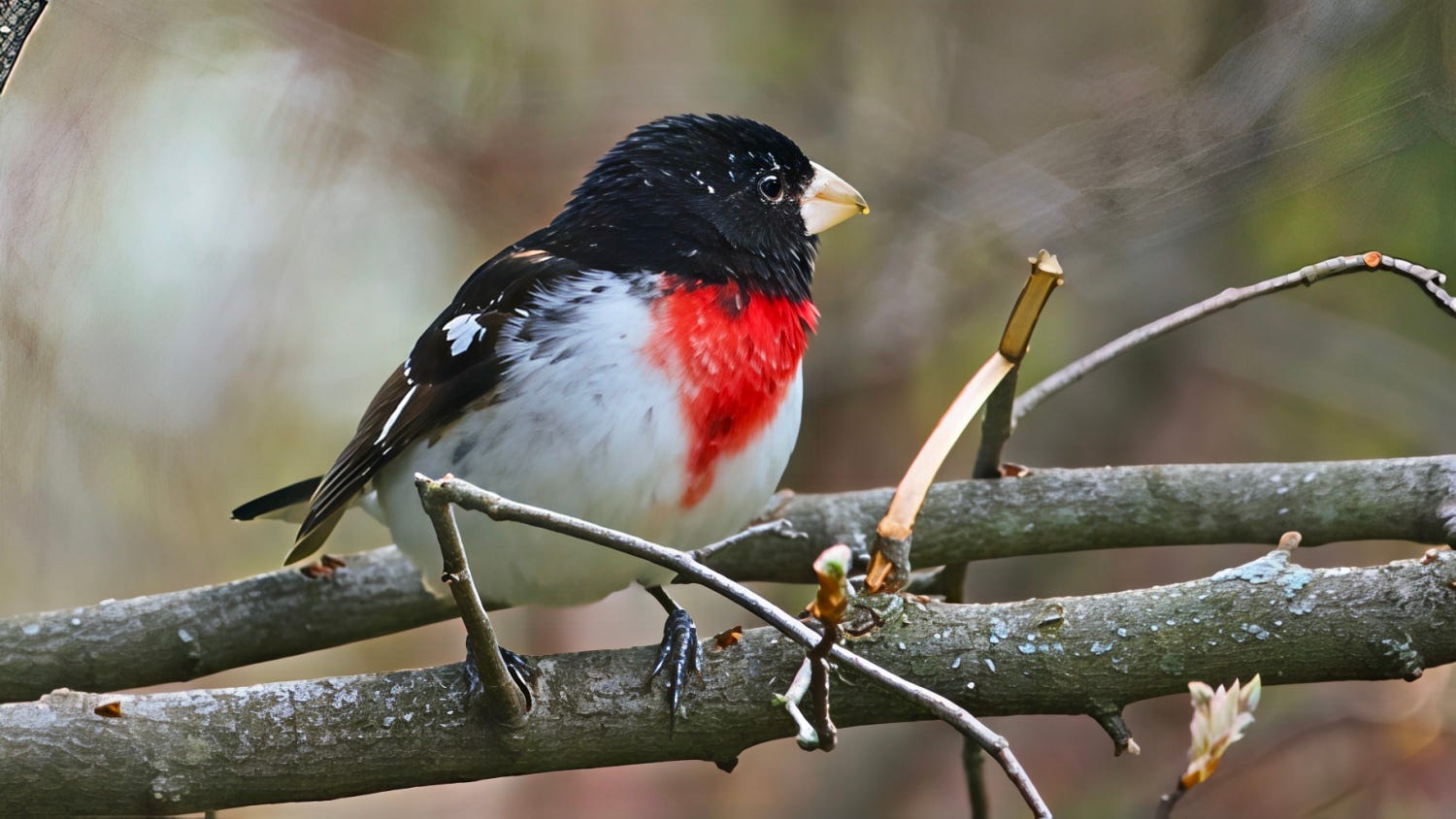
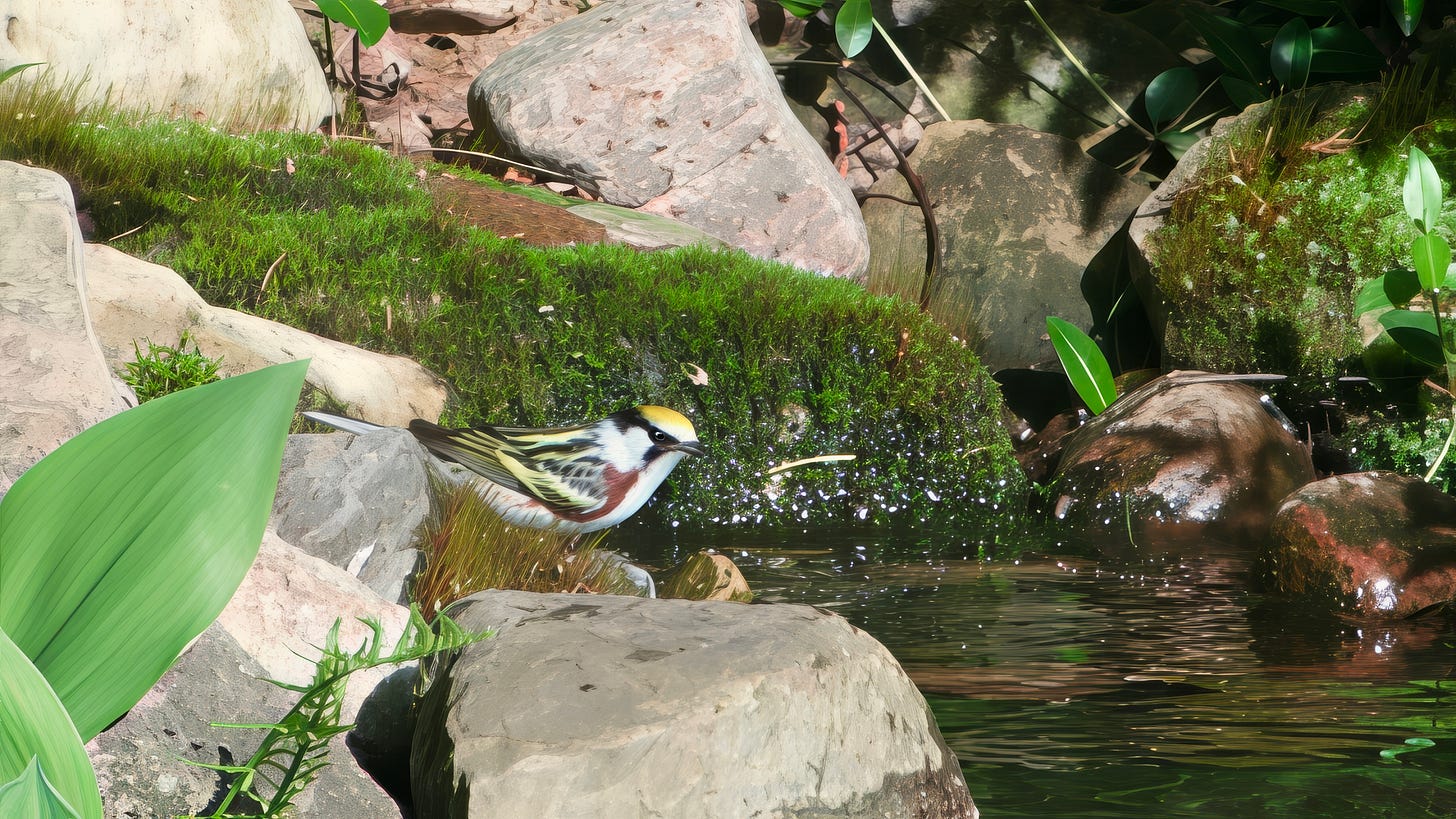




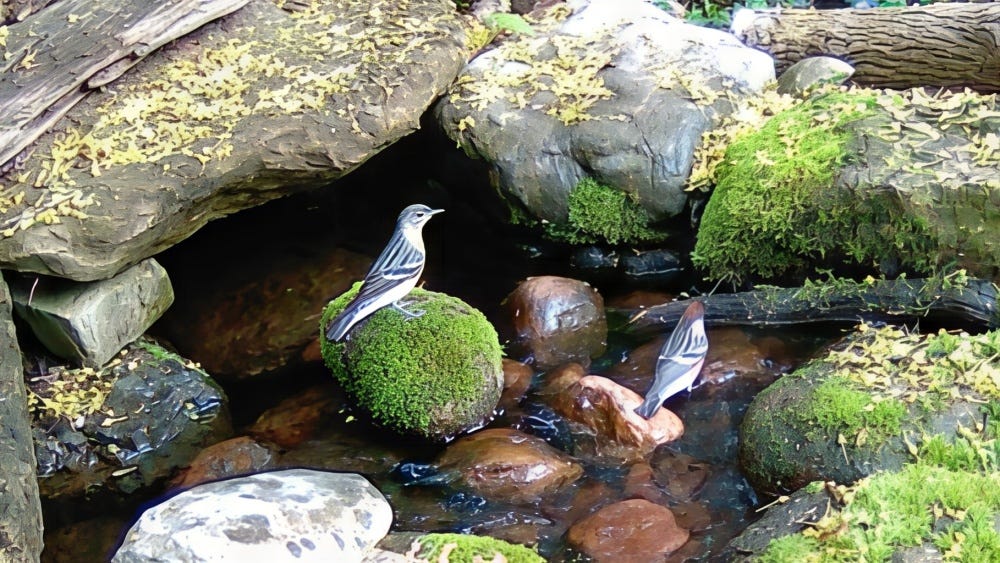
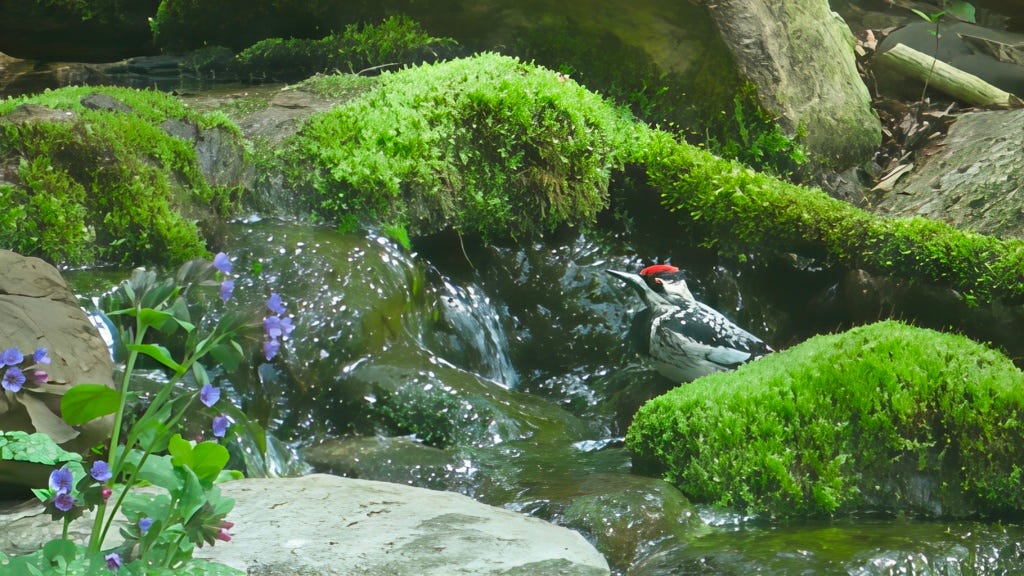


Such a nice post. With so much wonderful info. And your terrific pics, too!! Throw in a little P. G. Wodehouse and my tea and this makes for a swell Sunday morning treat! Thank you!
Nice sightings of the White-crowned Sparrow and Rose-breasted Grosbeak. The Grosbeak is such a sight to see.